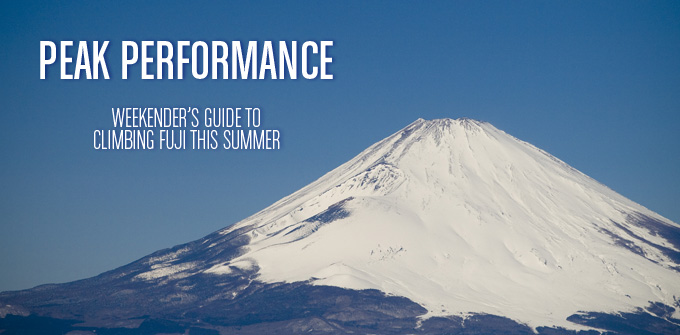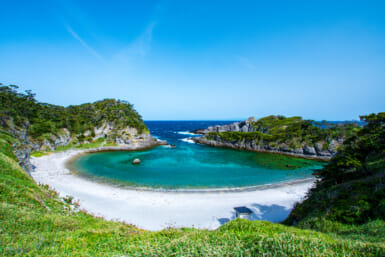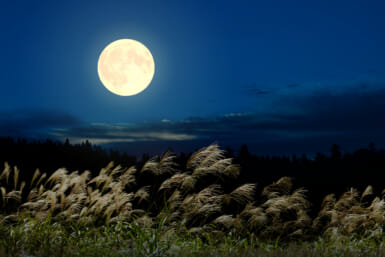Mount Fuji
All you need to know about reaching the peak of Japan’s most sacred mountain
Mount Fuji is Japan’s tallest and most sacred mountain. Fuji is a landmark and a national symbol that scrapes the heavens at 3,776 Meters. The climbing season officially starts in the second week of July and usually lasts for 4-6 weeks depending on conditions, so now is a perfect time to go.
Getting to the peak is certainly no walk in the park, most routes are surprisingly steep and will take at least 8 hours of serious hiking. However having said that, on any given day it is not unusual to see people of all ages and abilities on the slopes of Fuji-san, striving to reach the top.
For many it is an experience of a lifetime. It is estimated that up to a third of all the climbers are foreign tourists, making for an atmosphere that is at once quintessentially Japanese and international. One of the most popular approaches is to complete the hike in the early morning, arriving at the summit in time to witness the sunrise. And it certainly won’t disappoint, watching the sunrise from Mount Fuji can be one of the most spectacular views in Japan.
There are ten stations along the way up, the first at the foot of the mountain and the 10th at the summit, these include huts for resting as well as other basic amenities. Paths are paved up to the 5th station (at 1400-2400 m), which is the most common place to begin the ascent to the summit. There are four 5th stations, located on different sides of the mountain, among which the most popular is Kawaguchiko on the Tokyo side. So what are you waiting for? Whether you are a first timer, or a Fuji veteran take a look at the Weekender’s top tips for reaching the peak in style and comfort. Gambatte ne!!
History
Mount Fuji is a near perfectly symmetrical volcanic cone, the mountain is a near-mythical national symbol immortalized in countless works of art, the most famous of which is probably Hokusai’s 36 Views of Mt. Fuji. It is generally thought among historians that the first ascent was in 663 by an anonymous monk. The summit has been thought of as sacred since ancient times and was forbidden to women until the Meiji Era. The first foreigner ever to attempt the mountain was Sir Rutherford Alcock in September 1860.
What to take
In order to enjoy a safe and comfortable hike to the summit, it is crucial to bring the proper equipment. Many people have found out the hard way that it pays to come prepared. Some of the most important things to bring are listed below:
1. Hiking Boots: Tennis shoes just don’t quite cut it on the rocky, steep terrain and the potential of sudden, strong wind gusts is a good reason to bring proper boots that protect your ankles.
2. Proper Clothes: Bring proper protection against low temperatures and winds. It can be below zero at the summit, and strong winds often make it even colder. Bring rain gear, as weather conditions can change very quickly on the mountain. Gloves are also strongly recommended.
3. Flashlight: If you hike at night, a flashlight is highly recommended in any season and essential outside the peak season, when the trail is not illuminated by other hikers. Most people choose head lamps, as they leave both of your hands free.
4. Food: It is crucial to pack plenty of food and water, particularly on the trails where there are few mountain huts. The huts en-route offer various meals and drinks, however it is worth noting that prices increase with the altitude.
Climbing Season
July and August are the official climbing season. During these two months the mountain is usually free of snow, the weather is relatively mild, access by public transportation is easy and the mountain huts are open. Everybody without much hiking experience is strongly advised to tackle the mountain during the official climbing season.
Easy does it
The human body requires some time to adjust to a sudden increase of altitude, otherwise there is a risk of headache, dizziness and nausea. Quite a few people, who climb Mount Fuji, suffer from altitude sickness. To avoid this, you are advised to tackle the mountain at a slow pace and take frequent breaks.
Fuji Facts:
Explosive! Mount Fuji is actually a volcano. The last eruption occured in November 1707, but it’s been officially dormant since February 1708.
How High? The peak is 2.34 miles above sea level, that is approx 3,776 meters or 12,388.45 ft.
A Bit Chilly. Temperature at the top avarages 5 °C in July & 7 °C August.
Well Done Madame! Lady Fanny Parkes was the first woman to climb the mountain in 1867
External Link:
Mount Fuji Guide









